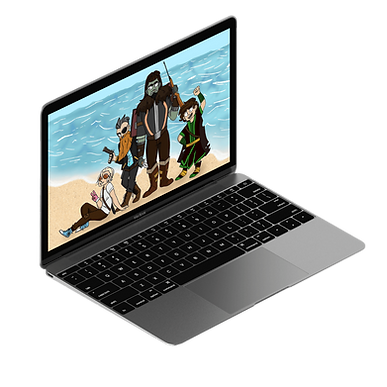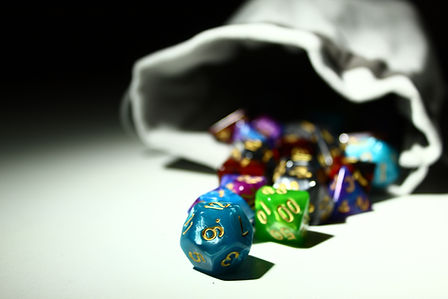How to Create a DnD Character: A Beginner's Guide
Welcome to Roll Britannia's comprehensive guide on Dungeons and Dragons (DnD) character creation. Whether you're a seasoned player looking for a refresher or a beginner stepping into the magical world of DnD for the first time, we've got you covered. This guide is specifically tailored for our DnD UK community, but players from all over the world will find it useful.

Quick Guide to Character Creation
-
Races: D&D 5th Edition offers a wide range of fantastical races for you to choose from. Each race has its unique racial stat bonuses and abilities. However, these abilities are more of a suggestion and can be adjusted with your Dungeon Master's (DM) approval.
-
Classes: Your class determines how you play the game. For example, if you want to be stealthy and precise, you might choose the rogue class. If you want to wield powerful magic, you might choose the wizard class. Each class has its unique playstyle and abilities.
-
Character Stats: Your stats show how good your character is at a particular thing. Each class will have two stats that you'll want to focus on improving. For example, a paladin needs strength to hit hard with their weapons and charisma to cast spells.
-
Rolling Stats: Rolling stats is usually done by rolling four six-sided dice (d6s) and dropping the lowest number. You do this six times to determine each of your stats. Alternatively, you can use the standard array of 15, 14, 13, 12, 10, and 8, or the point-buy system where you have 27 points to distribute among your stats.
-
Backgrounds: Backgrounds provide additional skills and proficiencies, as well as equipment and features that might help you in various situations.
-
Equipment: Your class and background provide you with starting equipment which can be very useful in your adventure.
-
Backstory: Creating a backstory for your character can help your DM to integrate your character's past into the game's narrative.
-
Alignments: Alignments are split into good, neutral, and evil, and then further split into lawful, chaotic, and neutral. However, the video suggests that alignments are not often used in gameplay and should not define your character.
-
Personality Traits, Ideals, Flaws, and Bonds: These can help shape your character's personality and relationships. They can be helpful if you're struggling to find your character's identity.
-
Physical Appearance: This is up to your imagination. You can stick to traits specific to your race or go wild with your character's appearance.

Choosing Your Race in DnD 5th Edition
DnD 5th Edition offers a plethora of fantastical races. Each race comes with unique racial stat bonuses and abilities. However, these racial abilities are more of a suggestion. If you think your Goliath should have a +2 to their intelligence, just talk it over with your Dungeon Master (DM). It's all good!
Here are a few examples of races you might choose:
-
Human: The most versatile and adaptable choice.
-
Elf: Known for their grace and mastery of magic and weapons such as the bow and sword.
-
Dwarf: Stout warriors and craftsmen, known for their hardiness.
-
Loxodon: A literal elephant person, known for their wisdom and strength.
For a detailed list of races and their abilities, check out DnD Beyond.


Selecting Your Class

Your class is all about how you play your game.
Here are a few examples:
-
Rogue: Perfect for those who want to blend into the shadows and find their opponent's exact weak spot.
-
Barbarian: Ideal for players who prefer to hit things hard.
-
Wizard: For those who want to wield powerful magic and believe that the pen is mightier than the sword.
Each class comes with its unique abilities and features. For a comprehensive list of classes, visit the official DnD website.

Understanding Character Stats
Your stats show how good your character is at a particular thing, and they correspond with how each class operates.
For example, a Paladin needs strength to hit hard with their weapons and charisma to cast spells.
Another example is monks who need dexterity to hit fast and hard, but they also need wisdom to discipline their minds. You can find more about how stats work in DnD on RPG Bot.
Rolling Stats

Rolling stats is usually done by rolling four six-sided dice (d6s) and dropping the lowest number.
Do this six times, and you have each of your stats ready to go. Alternatively, you can use the standard array of 15, 14, 13, 12, 10,and 8, or the point-buy system where you have 27 points to distribute among your stats.
For more information on rolling stats, check out this guide on DnD Beyond.

Choosing Your Background
Backgrounds in DnD are not just for flavour.
They also give you additional skills and proficiencies. For example, if you take the entertainer background, it gives you:
-
Skill proficiencies in acrobatics and performance
-
Tool proficiencies with a disguise kit and one type of musical instrument
-
Some handy equipment
You can explore different backgrounds on the official DnD website.

Creating A Backstory

Creating a backstory for your character can help your DM to integrate your character's past into the game's narrative.
This is an essential part of how to create a DnD character, as it adds depth and a personal touch to your character.
This guide on RPG Bot can help you create a compelling backstory.
Understanding Alignments
Alignments are split into good, neutral, and evil, and then further split into lawful, chaotic, and neutral.
However, don't let alignments define your character.
They are more of a guide than a rule.










Personality Traits, Ideals, Flaws, and Bonds
.jpg)
These can help shape your character's personality and relationships.
They can be helpful if you're struggling to find your character's identity.
In Dungeons and Dragons, creating a well-rounded character goes beyond just stats and abilities. Personality traits, flaws, and bonds play a crucial role in bringing your character to life. By developing a backstory and thinking about your character's motivations, you can add depth and complexity to their actions and choices. Whether you're a seasoned player or new to the game, taking the time to consider these aspects will enhance your gameplay experience.
You can find more about these aspects of character creation on the official DnD website.
Physical Appearance
These can help shape your character's personality and relationships.
They can be helpful if you're struggling to find your character's identity.
In Dungeons and Dragons, creating a well-rounded character goes beyond just stats and abilities. Personality traits, flaws, and bonds play a crucial role in bringing your character to life. By developing a backstory and thinking about your character's motivations, you can add depth and complexity to their actions and choices. Whether you're a seasoned player or new to the game, taking the time to consider these aspects will enhance your gameplay experience.
You can find more about these aspects of character creation on the official DnD website.
.jpg)
That's our comprehensive guide on DnD 5E character creation. If you're new to the game, we hope this guide has been helpful. Make sure to check out our Roll Britannia podcast for more guides on playing your character, combat, and leveling up. If you think we may have missed something, please let us know in the comments. Most importantly, have a lovely day and enjoy your journey in the world of Dungeons and Dragons!